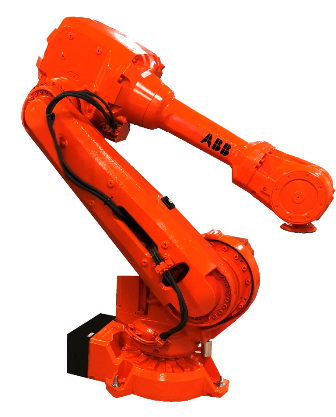Robots Done Right |
Used Robot Sales |

Sanding Robots

Sanding is a vital application to many manufacturing processes. It is a subtype of material removal applications in which an abrasive is applied to the surface of a workpiece in order to achieve a smooth, clean, quality product. However, the manual process of sanding can be tedious, dull, dirty, and hazardous. Manual sanding is also prone to errors and inconsistencies no matter how skilled a professional sander may be. Automating sanding applications with material removal robots has proven to be a cost-effective solution, improving cycle times, worker safety, and product quality.
Industrial robots used for the automation of sanding applications can either be used to complete the sanding or to apply workpieces to fixed sanding machines. A FANUC M-20ia can be integrated with an end-effector, typically an orbital sander, along with a vision system and force sensors in order to be capable of directly completing sanding tasks. For those who may have already invested in fixed sanding machines, robots can still be utilized. Instead of integrating a Motoman HP20 with a sanding tool, a gripper can be fitted to its arm to allow the material handling robot to handle, apply, and maneuver workpieces to the sanding machines. Forces sensors may also be integrated with handling robots to accurately apply workpieces to sanders.
Robotic sanding also improves cycle times and productivity rates. Sanding robots are able to operate at much faster speeds than humans and for longer periods of time. A Yaskawa MH24 is capable of sanding one workpiece within ten minutes while the same workpiece would take over an hour to complete when sanded by hand. Faster cycle times result in more parts being completed. This combined with the ability to operate robots around the clock can significantly increase productivity levels. There are no shift stoppages, breaks, or days off for industrial robots. This is yet another one of the advantages of automating with robots
One of the biggest drivers behind the automation of material removal applications is the need for worker safety. Sanding is a hazardous job with the risk of worker exposure to harmful dust, debris, or fumes causing injury or adverse health effects. On top of the hazards, it is also very labor intensive. Workers in these positions become burnt out causing high turnover for manufacturers. Industrial robots are designed to handle harsh conditions. Many material removal robots are IP rated to protect from the intrusion of dust and debris, preventing operation failures in these conditions. Sanding robots do not tire and are always available to work, making turnover and safety issues a thing of the past for manufacturers.
Contact us by email mm@robotsdoneright.com or phone (440) 724-6568 today to discuss buying or selling a sanding robot.